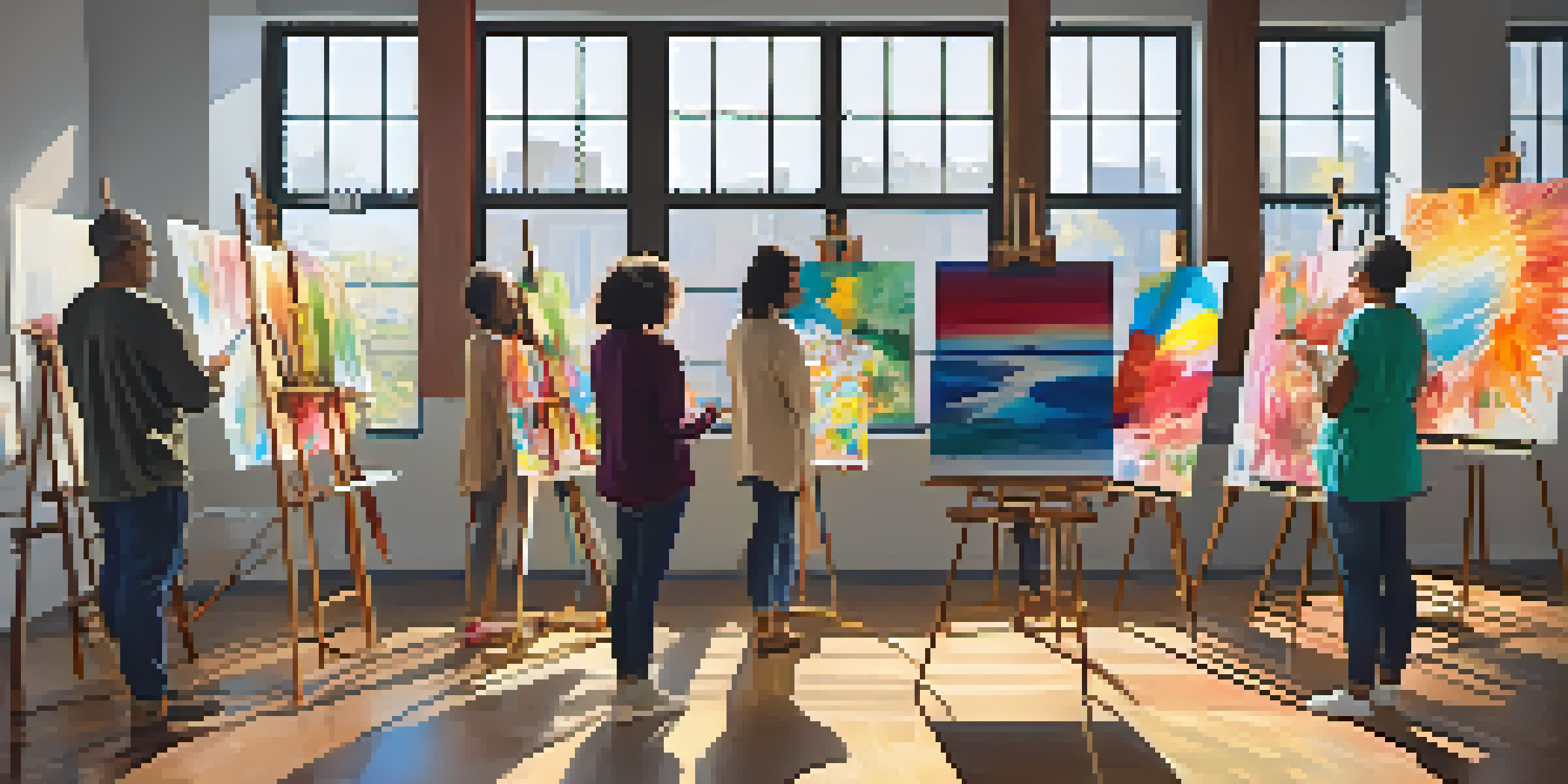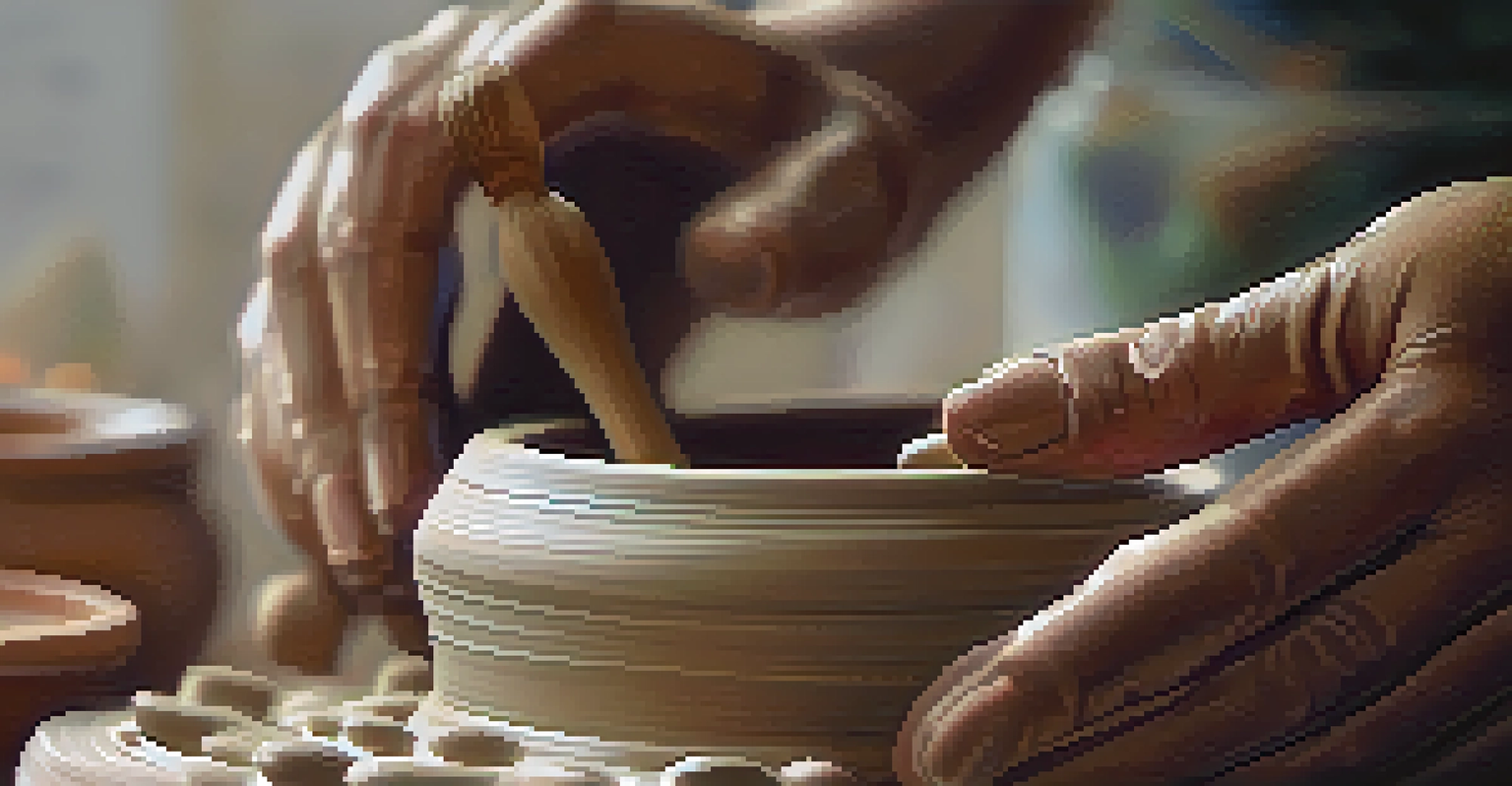Art Therapy: Healing Trauma Through Creative Expression

Understanding Art Therapy and Its Purpose
Art therapy combines artistic expression with psychological principles to promote healing. By engaging in creative activities, individuals can explore their emotions in a safe environment. This therapeutic approach enables people to communicate feelings that may be difficult to articulate verbally.
Art is the most beautiful of all lies; it is a lie that helps us to understand the truth.
The goal of art therapy is not to create a masterpiece, but rather to facilitate self-discovery and emotional growth. For many, the act of creating art serves as a powerful tool to process trauma and express feelings that might otherwise remain hidden. This process fosters a sense of empowerment and control over one's narrative.
Art therapists are trained professionals who guide clients through this journey, using various art forms such as painting, drawing, or sculpting. They tailor sessions to meet individual needs, creating a supportive space where healing can occur. This unique blend of art and therapy makes it a valuable resource for those coping with trauma.
The Psychological Benefits of Creative Expression
Engaging in artistic activities can significantly reduce stress and anxiety. When individuals focus on creating, they often enter a state of flow, which is a mental state characterized by complete immersion and enjoyment in the activity. This distraction from negative thoughts can be incredibly therapeutic.

Furthermore, expressing oneself through art can lead to increased self-awareness. It allows individuals to explore their feelings and thoughts without judgment, helping them understand their experiences on a deeper level. This newfound insight can be pivotal in the healing process.
Art Therapy Promotes Emotional Healing
Art therapy combines creative expression with psychological support, helping individuals process emotions and trauma in a safe environment.
Additionally, art therapy can improve emotional regulation, as creating art helps individuals process complex emotions. By visually representing feelings, clients can distance themselves from overwhelming emotions, making them easier to manage. This transformation can be liberating and empowering.
How Art Therapy Addresses Trauma
Trauma can be challenging to confront, often leaving individuals feeling isolated and misunderstood. Art therapy provides a non-threatening medium for expressing those buried feelings, making it easier to confront painful memories. This creative outlet can be a stepping stone toward healing.
Creativity takes courage.
By using art to depict their trauma, individuals can reframe their experiences and gain new perspectives. This process can lead to catharsis, where the act of creation becomes a release of built-up emotions. It can also help in reshaping one's identity after trauma, allowing for growth and resilience.
Moreover, the therapeutic relationship with the art therapist is crucial. The therapist acts as a guide, helping clients navigate their feelings and experiences while fostering a sense of safety. This connection can significantly enhance the healing process, as clients feel supported in their journey.
Different Forms of Art Therapy Practices
Art therapy encompasses a wide range of creative practices, including painting, drawing, sculpture, and even photography. Each medium offers unique benefits and can cater to different preferences and emotional needs. For instance, painting might allow for bold expression, while drawing can offer a gentler approach to exploring feelings.
Some art therapists also incorporate other modalities, such as music or dance, to broaden the therapeutic experience. This integrative approach can enhance the healing process, allowing clients to connect with their emotions on multiple levels. Combining various art forms can also engage different senses, enriching the therapeutic experience.
Creative Expression Reduces Stress
Engaging in artistic activities can alleviate anxiety and improve self-awareness, promoting a state of flow that enhances emotional regulation.
Ultimately, the choice of medium depends on what resonates most with the individual. The flexibility in art therapy practices ensures that everyone can find a suitable outlet for their emotions. This personal connection to the chosen medium can deepen the therapeutic impact.
Real-Life Success Stories in Art Therapy
Many individuals have found solace and healing through art therapy. For example, a veteran coping with PTSD might use painting to express feelings of trauma and loss. Through this creative process, they can transform their pain into something tangible, facilitating discussion and understanding.
Similarly, children who have experienced trauma often struggle to articulate their feelings. Art therapy can provide a safe space for them to express themselves, using colors and shapes to communicate their emotions. This approach not only aids in their healing but also fosters a sense of connection with their therapist.
These success stories highlight the transformative power of art therapy. Clients often report feeling lighter and more in control of their emotions after engaging in creative expression. Such experiences reinforce the idea that healing can be a personal and artistic journey.
The Role of Art Therapists in the Healing Process
Art therapists play a crucial role in guiding clients through their creative journeys. They are trained to understand the psychological impacts of trauma and how art can facilitate healing. Their expertise allows them to tailor sessions to each client's unique needs and experiences.
In addition to facilitating artistic expression, art therapists provide a safe, non-judgmental space for clients to explore their feelings. This relationship is built on trust, fostering open communication and emotional safety. Clients often feel more comfortable sharing their innermost thoughts when supported by a trained professional.
Art Therapists Guide the Process
Trained art therapists create a supportive atmosphere, tailoring sessions to individual needs and fostering a sense of safety for clients.
Furthermore, art therapists can help clients set goals for their sessions, ensuring that the creative process aligns with their healing journey. By collaborating on these objectives, clients can feel a sense of ownership over their therapeutic experience, empowering them to take charge of their healing.
Creating a Personal Art Therapy Practice at Home
You don't need to be a professional artist to benefit from art therapy; you can create a personal practice at home. Start by gathering some basic supplies like paper, paints, or clay. The key is to find a medium that excites you and allows for free expression without the pressure of perfection.
Set aside time each week for your creative practice, treating it as an essential part of your self-care routine. Use this time to explore your feelings through art, letting go of self-judgment and embracing the process. Remember, there are no right or wrong ways to create; it's all about expressing yourself.

Additionally, consider incorporating mindfulness techniques into your practice. Before starting, take a few moments to breathe deeply and center yourself. This can enhance your experience, allowing you to connect with your emotions more deeply. Embracing creativity at home can be a powerful tool for ongoing healing.